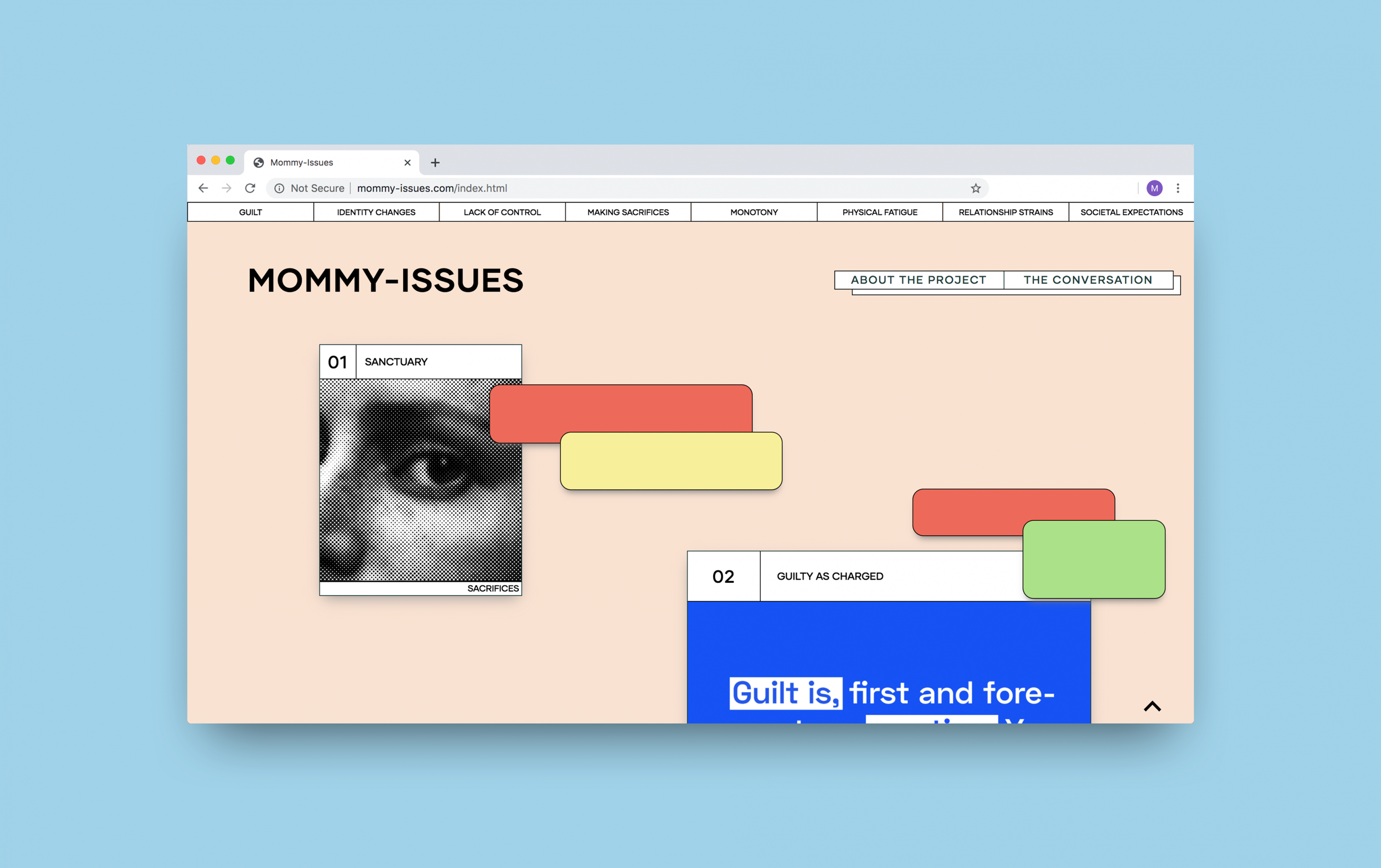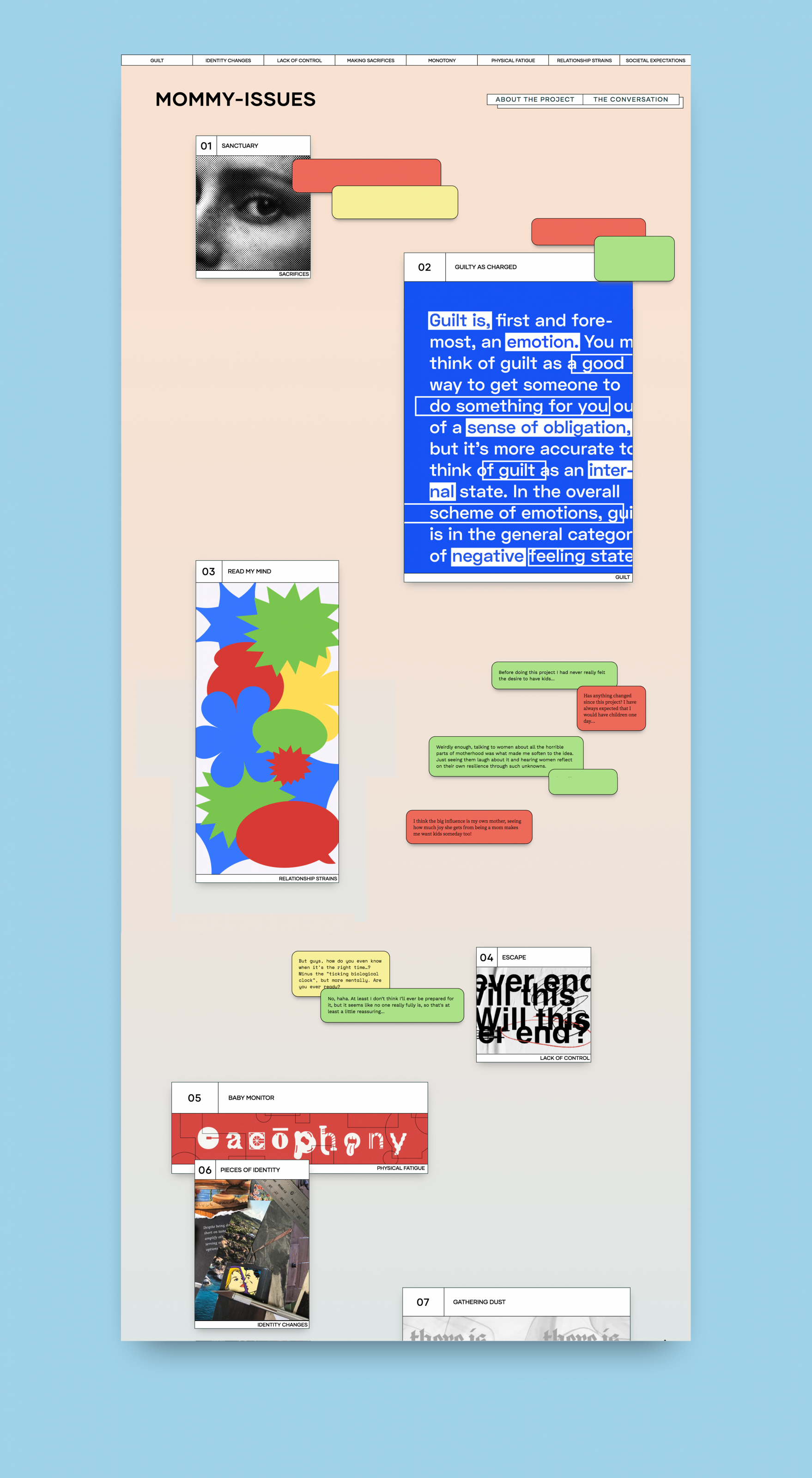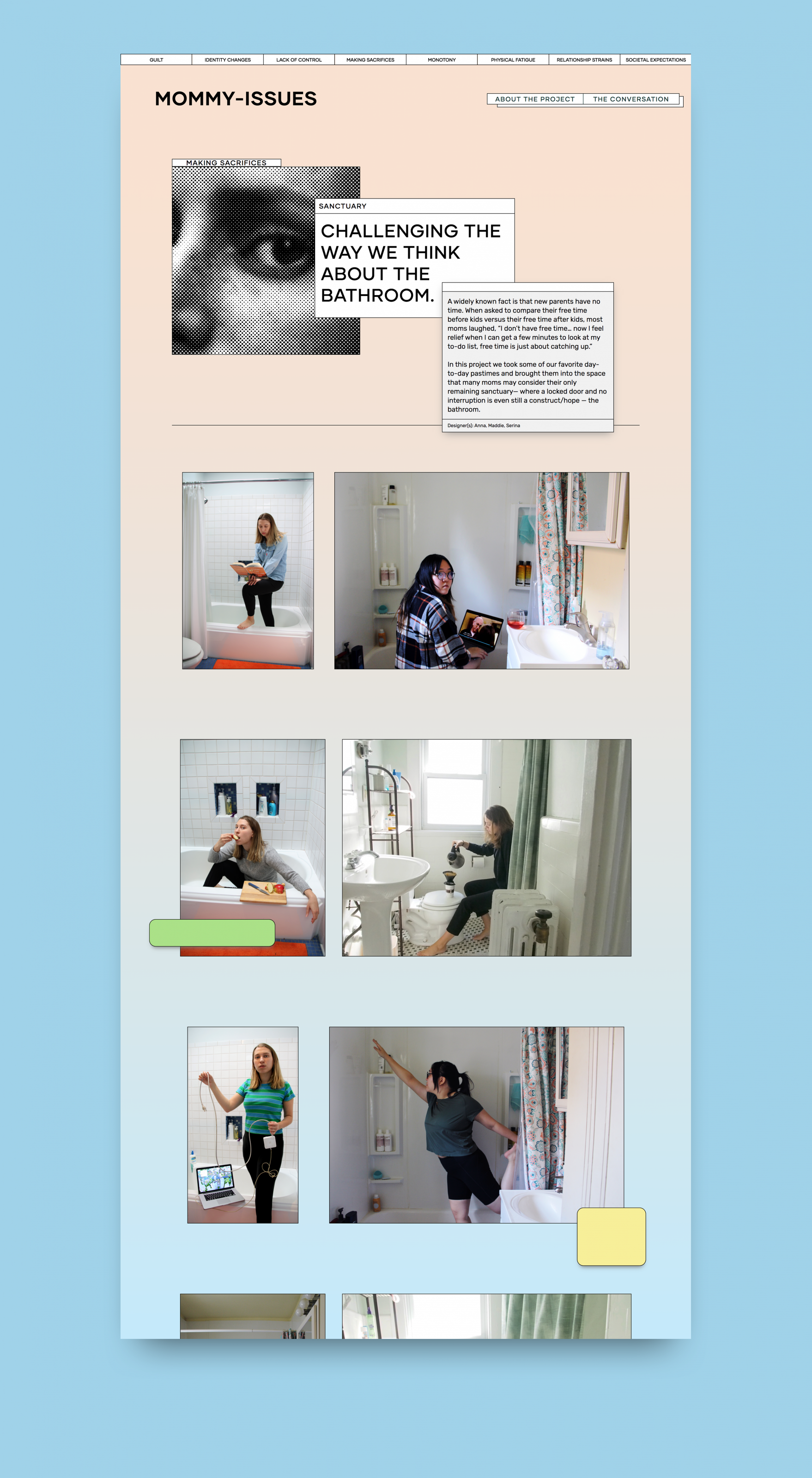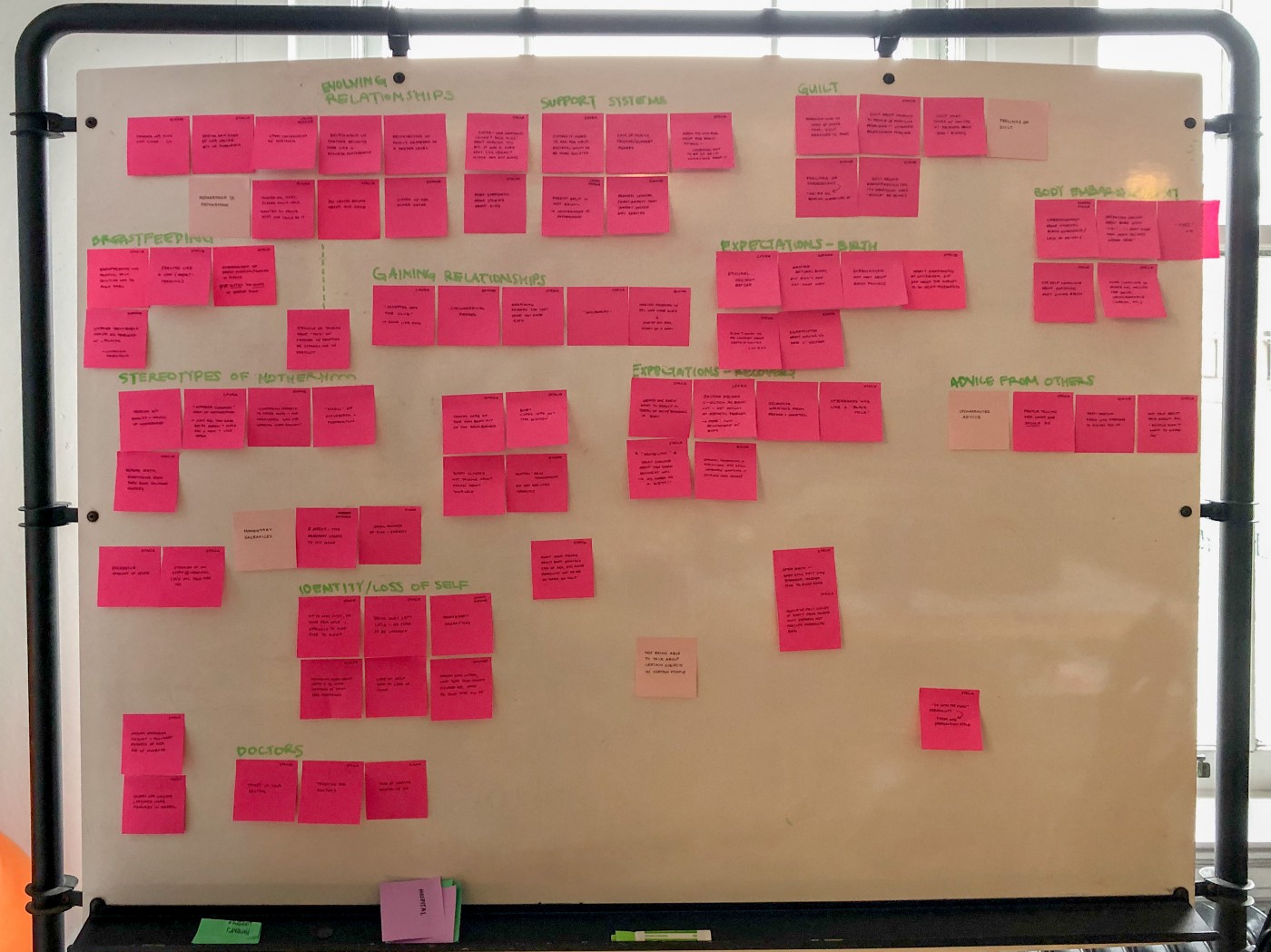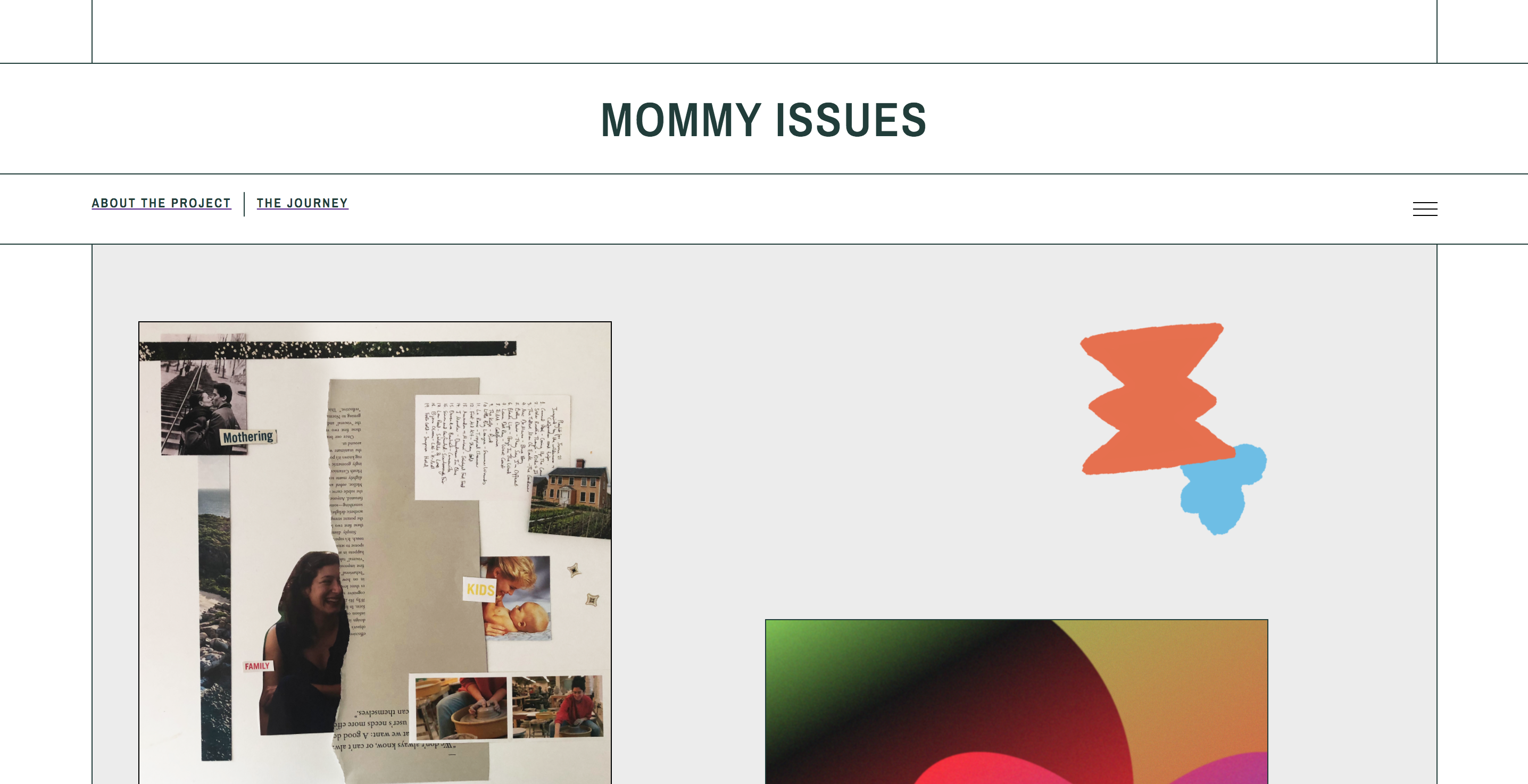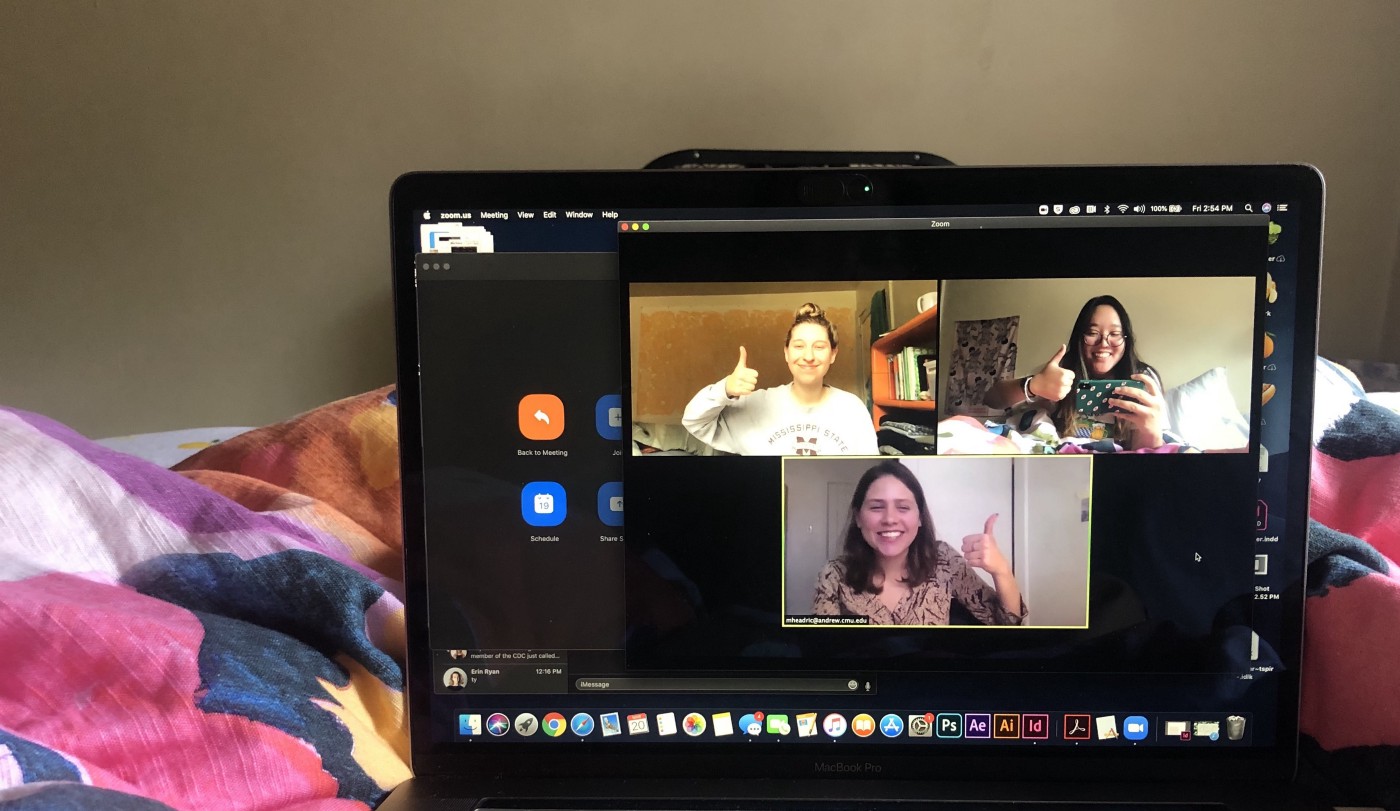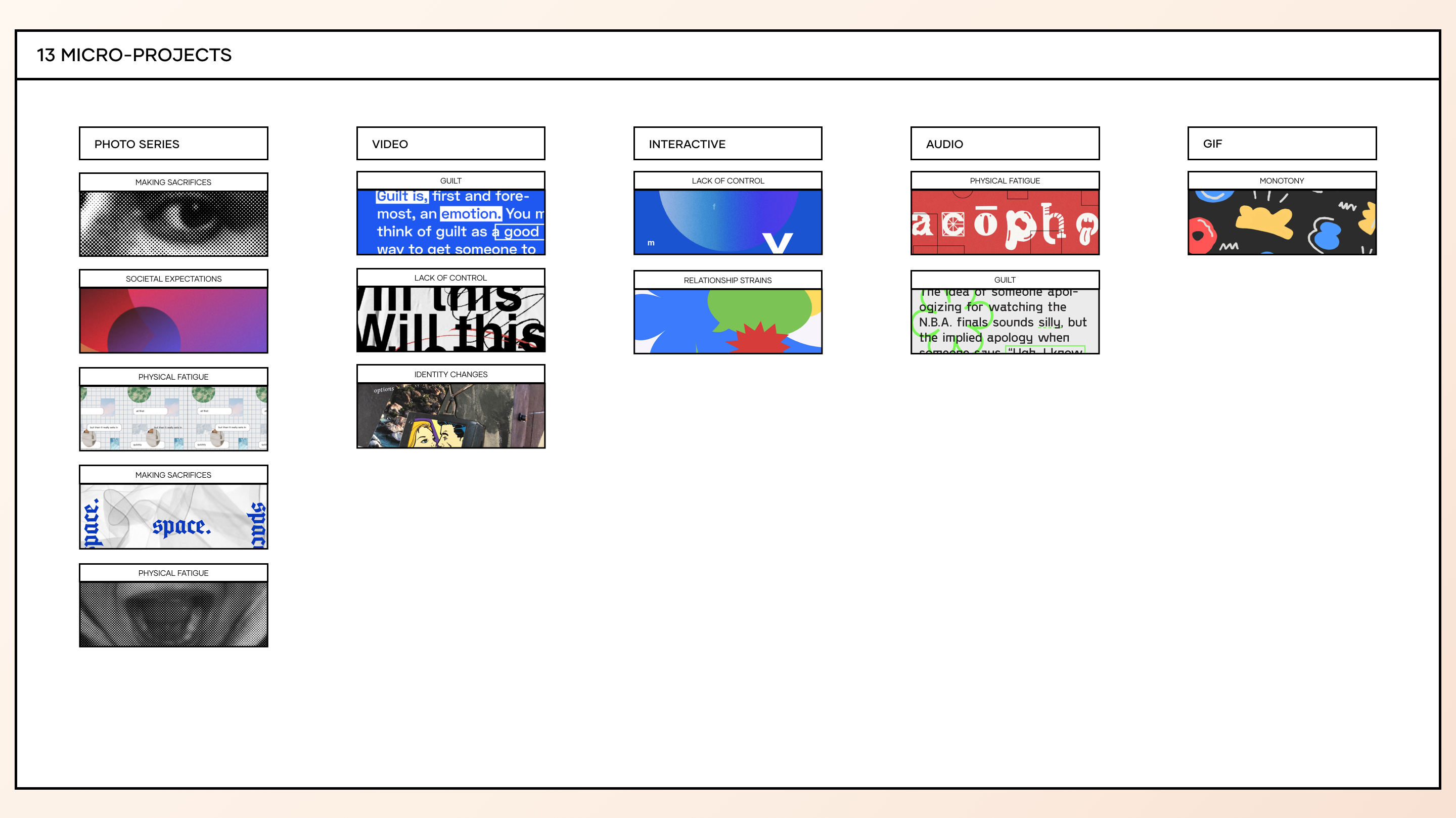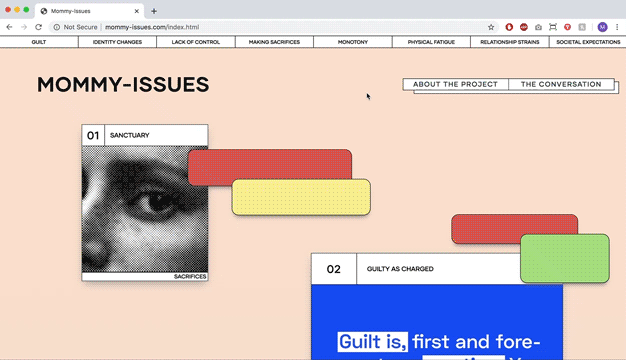Working alongside two talented designers, Serina Liu and Anna Gross, this project centers on the issues surrounding the transition into motherhood and the unique challenges that women face in the face of this life event. While motherhood is certainly not unusual or new, the conversation and perception around this issue is largely unknown and there is thus a general lack of empathy surrounding it. After talking to moms and experts in the field and identifying key research insights, the team employed their three unique design practices to create quick-paced projects aimed at adding to the conversation around motherhood by creating a more representative picture of what it’s truly like to be a new mom. These projects, coined the term, “micro-projects” were compiled into an immersive website, Mommy-Issues.com.
Adding to the conversation
Rather than facing the issue with the goal of creating a “design solution,” the team was interested in how our voices and distinct practices could add a different perspective to the conversation around motherhood. With even preliminary research, it’s no secret that the current conversation around new motherhood is often glamorized and focused on the baby. This lack of truthful and holistic representation keeps the public unaware, and thus unempathetic, and leaves mothers feeling isolated and helpless. We set out to use quick-paced making as our medium to provoke thought and challenge the general public’s ideas about what it means to be a new mom. With this, our solution was not aimed directly at new mothers, but at those who have a skewed idea of what new motherhood truly entails. This “conversation” motif manifested itself into the visual style of the website as well. Throughout the website, the viewer is immersed into conversations between the team of three designers who contributed to the project about how their own perception about motherhood changes throughout the making of the project.
Getting acquainted with an unknown issue
The entire team was challenged in a unique way as we had to immerse ourselves in a subject area that was almost entirely foreign to us. As motherhood is not something personally experienced by any of us, we relied heavily on primary research to guide our process. It was critical that we ensure that the lived experience of new mothers was accurately represented through our work, this meant continually returning to our research synthesis for guidance. This aspect of the project also pushed each of us to reflect on how we, as designers, gain empathy for those we design for. With no personal experience of being a mom, the micro-projects we created created an opportunity for us to truly put our feet in the shoes of mothers and learn how designers can be more empathetic towards the ones they are designing for. This posed bigger questions about our design practice as a whole like, ‘how immersed into a user’s experience does a designer really need to go in order to rightly design for them?’ or ‘what is the appropriate scale for research in a design process?’
Working remotely and being adaptable
Another defining aspect of this project was the situational factors that surrounded it. Halfway through the making of this project, COVID-19 put an end to in-person meetings and critique from professors and peers. With the change in situation, the team had to learn to be adaptable. We made intentional pivots in the project and learned how to communicate and collaborate remotely. This included daily zoom calls, more intentional distribution of work, and communicating at a maximum.
Making the project real
A final piece of this website was the importance we placed on it being real. While we could have simply mocked up the website, we decided that making this website clickable and live for all was hugely important to the goal of the project. As the designer on the team with coding experience, I coded the full working website. I learned important lessons about file structure, creating a visual system, and being flexible to the needs of the team as a whole.
—
learn more about our design process by visiting our team’s Medium page.


